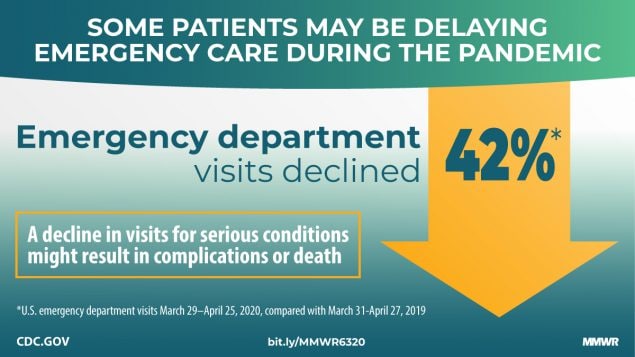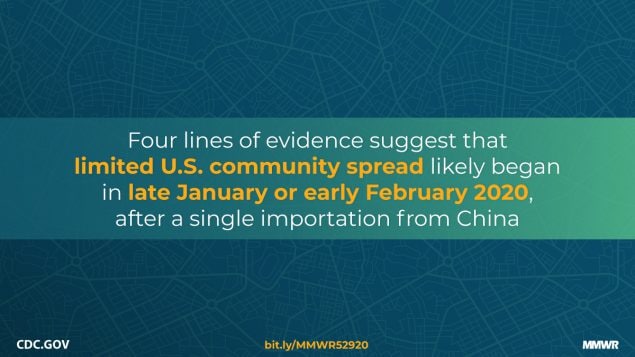NSSP Support During and After the COVID-19 Pandemic

The National Syndromic Surveillance Program (NSSP) supported the nation’s response to the COVID-19 pandemic through its partnerships with state and local health departments, non-governmental organizations, the private-sector, and academia. Emergency department (ED) data helped us detect, understand, and respond to this public health emergency. The NSSP Community of Practice, a group of dedicated analysts, epidemiologists, and public health practitioners, collaborated across jurisdictional lines to share information about COVID-19 with one another. During the COVID-19 response, NSSP and its collaborators provided state and federal leaders with health information and situational awareness that helped them coordinate response efforts at the local, state, regional, and national levels.
At the beginning of the national response:
- State and local health departments were already at work using NSSP’s analytic tools and collaborative environment to understand this health threat and identify at-risk populations.
- Public health analysts used capabilities provided through NSSP to collaborate in developing community-informed definitions for COVID-Like Illness (CLI) and as soon as a diagnosis code was introduced, clinically diagnosed COVID-19.
- NSSP quickly stood up a data stream of six commercial laboratory test results to
- determine geographic locations where early testing volume might be low to help maintain national supplies, and
- monitor testing volume and percent positivity in special populations, including nursing homes, oncology units, and homeless shelters.
Throughout the response, NSSP innovations ensured syndromic surveillance remained a source of high-quality data to support public health decision-making. Here’s how NSSP supported the response:
- Visualized data in new ways. From dashboards for sharing geographic hotspots to those displaying test volume and proportion positive, new visualizations helped public health departments, CDC’s Emergency Operations Center, and the Joint Coordination Center in the national effort to identify, understand, and respond to changing COVID-19 patterns.
- Entered strategic partnerships to incorporate new data sources. To expand the data available to protect public health, NSSP added COVID data from six commercial laboratories. This provided health department analysts the ability to monitor orders, test results, and more.
- Provided timely data updates. Disease experts in the CDC Emergency Operations Center and the National Response Coordinating Center relied on the up-to-date information from NSSP to plan and execute the COVID-19 national response.
- Supported state and local health departments’ use of data. NSSP provided health departments with tools to analyze, visualize, and share the findings.
- Collaborated to use data better. Through a Community of Practice specializing in syndromic surveillance, NSSP convened data analysts from state and local health departments, CDC, academia, and industry to share insightful analysis strategies.
- Monitored vaccine-associated adverse events possibly related to the COVID-19 vaccines. NSSP developed a strategy to identify and monitor visits to emergency departments that may be related to adverse events in patients that recently received a vaccine. This flexible and iterative strategy kept pace with the rapid changes in vaccine guidelines and developments, sharing timely data with disease experts.
- Used laboratory data to examine ongoing impact of COVID-19 and COVID-19 policies on other public health areas. NSSP’s commercial laboratory data helped in areas such as testing availability and inclusion of COVID-19 testing on panels with other respiratory pathogens.
- Scraped web data to get an integrated view of other viral diseases circulating at the same time. The work was subsequently used to develop an Rshiny application that was shared across CDC and with the NSSP Community of Practice.
- Disseminated critical information on the indirect effects of the pandemic. NSSP data were instrumental in monitoring changes in emergency department visits related to violence, overdose, and injury. NSSP collaborated with partners across CDC to create custom approaches to monitor visits for mental health conditions, suicide-related behaviors, drug overdoses, firearm injuries, seizures, and epilepsy. Results highlighted a disproportionate increase in visits associated with self-harm and eating and tic disorders among adolescent females and pointed toward the need to prioritize prevention and early intervention efforts, especially among adolescent females who may have increased need.
- Examined the impact of the COVID-19 pandemic on use of emergency department care by factors including age, region, race, and ethnicity.
The algorithms developed by NSSP to support the COVID-19 response are still in use to monitor COVID-19 trends. The analytic strategies developed during the response have broad applicability to other surveillance efforts.
MMWR Syndromic Reports

Surveillance After Expiration of the Public Health Emergency Declaration―United States, May 11, 2023. Read the full report.
Correlations and Timeliness of COVID-19 Surveillance Data Sources and Indicators―United States, October 1, 2020–March 22, 2023. Read the full report.

Some patients may be delaying emergency care during the pandemic. Data from the National Syndromic Surveillance Program describes the nationwide decline in emergency department visits. Read the full report.

Enhanced syndromic and virus surveillance will be needed to monitor COVID-19 trends for the duration of the pandemic. Read the full report.

Changing Age Distribution of the COVID-19 Pandemic — United States, May–August 2020. Read the full report.
